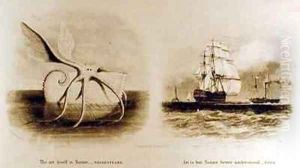Charles, M Curtis Paintings
Charles M. Curtis, born in 1868, is not primarily known as an artist in the traditional sense but has made significant contributions in the realm of photography, particularly in documenting Native American cultures. His work, spanning the early 20th century, offers a comprehensive and poignant visual account of Native American life, capturing the essence of their traditions, ceremonies, and daily routines at a time when these cultures were undergoing profound changes due to the encroachment of Western expansion.
Curtis's journey into photography began in his youth, leading him to eventually embark on one of his most notable projects, 'The North American Indian,' a monumental series that aimed to record the lives and customs of the Native American peoples. This ambitious project, which spanned over three decades, from the late 1890s to the 1930s, was fueled by Curtis's deep respect and fascination for the cultures he sought to document. Despite facing numerous challenges, including financial hardships and logistical obstacles, Curtis's dedication to his work never wavered.
Throughout his career, Curtis traveled extensively across the American continent, from the Great Plains to the Southwest, the Pacific Northwest, and beyond, photographing more than 80 tribes. His photographs are celebrated not only for their artistic merit but also for their historical significance, providing invaluable insights into the lives and customs of Native American peoples at a critical juncture in their history. Curtis's work, however, has not been without controversy. Critics have debated the extent to which his photographs may romanticize or idealize his subjects, potentially distorting the realities of their lives.
Despite these debates, Curtis's contributions to the field of photography and ethnography remain undeniable. His work has left an indelible mark on the historical record of Native American cultures, offering future generations a window into a world that has been irrevocably changed. Charles M. Curtis passed away in 1952, leaving behind a legacy that continues to captivate and educate, bridging the gap between art and anthropology.
